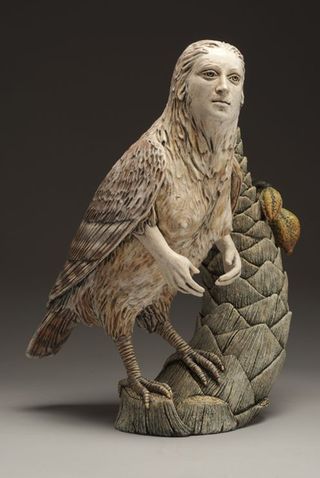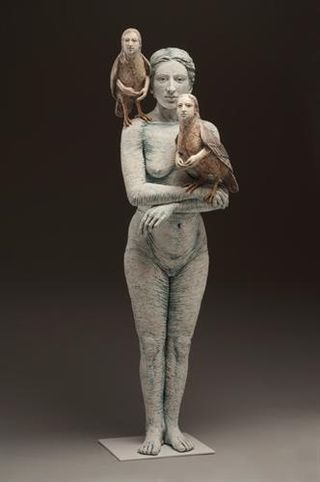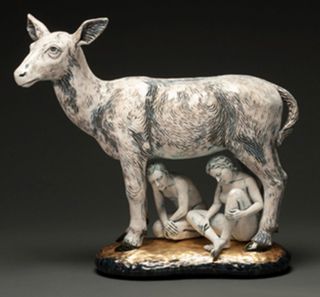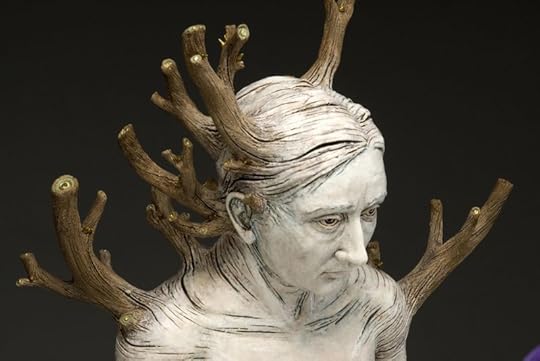Daydreams and Spells
The passage below is from "Why our future depends on libraries, reading, and daydreaming," a recent lecture by Neil Gaiman in which he argues not only for the value of reading, but also for the value of stories often dismissed as "escapist." (Follow the link to read this excellent piece in full.)
"Fiction can show you a different world," Neil says. "It can take you somewhere you've never been. Once you've visited other worlds, like those who ate fairy fruit, you can never be entirely content with the world that you grew up in. Discontent is a good thing: discontented people can modify and improve their worlds, leave  them better, leave them different.
them better, leave them different.
And while we're on the subject, I'd like to say a few words about escapism. I hear the term bandied about as if it's a bad thing. As if 'escapist' fiction is a cheap opiate used by the muddled and the foolish and the deluded, and the only fiction that is worthy, for adults or for children, is mimetic fiction, mirroring the worst of the world the reader finds herself in.
If you were trapped in an impossible situation, in an unpleasant place, with people who meant you ill, and someone offered you a temporary escape, why wouldn't you take it? And escapist fiction is just that: fiction that opens a door, shows the sunlight outside, gives you a place to go where you are in control, are with people you want to be with (and books are real places, make no mistake about that); and more importantly, during your escape, books can also give you knowledge about the world and your predicament, give you weapons, give you armour: real things you can take back into your prison. Skills and knowledge and tools you can use to escape for real.
"As J.R.R. Tolkien reminded us, the only people who inveigh against escape are jailers."
In her lovely biographical essay "Spells of Enchantment," Helen Pilinovsky notes how all kinds of children are in need of escapism, even those who don't come from particularly troubled homes:
"Fairy tales, fantasy, legend and myth...these stories, and their
topics, and the symbolism and interpretation of those topics...these
things
have always held an inexplicable fascination for me," she writes.  "That
"That
fascination is at least in part an integral part of my character — I was
always the kind of child who was convinced that elves lived in the
parks, that trees were animate, and that holes in floorboards housed
fairies rather than rodents.
"You need to know that my parents, unlike those typically found in
fairy tales — the wicked stepmothers, the fathers who sold off their
own flesh and blood if the need arose — had only the best intentions for
their only child. They wanted me to be well educated, well cared for,
safe — so rather than entrusting me to the public school system, which
has engendered so many ugly urban legends,
they sent me to a private school, where, automatically, I was
outcast for being a latecomer, for being poor, for being unusual.
However, as every cloud does have a silver lining — and every miserable
private institution an excellent library — there was some solace to be
found, between the carved oak cases, surrounded by the well–lined
shelves, among the pages of the heavy antique tomes,
within the realms of fantasy.
 "Libraries and bookshops, and indulgent parents, and myriad books
"Libraries and bookshops, and indulgent parents, and myriad books
housed in a plethora of nooks to hide in when I should have been
attending math classes...or cleaning my room...or doing
homework...provided me with an alternative to a reality I didn't much
like. Ten years ago, you could have seen a number of things in the
literary field that just don't seem to exist
anymore: valuable antique volumes routinely available on library
shelves; privately run bookshops, rather than faceless chains; and one
particular little girl who haunted both the latter two institutions. In
either, you could have seen some variation upon a scene played out so
often that it almost became an archetype:
"A little girl, contorted, with her legs twisted beneath her, shoulders
hunched to bring her long nose closer to the pages that she peruses. Her
eyes are glued to the pages, rapt with interest. Within them, she finds
the kingdoms of Myth. Their borders stand unguarded, and any who would
venture past them are free to stay and occupy themselves as they would."
The exquisite mythic sculpture above and below is by Adrian Arleo, a ceramic artist in Lolo, Montana. "For over fifteen years," says Arleo, "I've been creating sculpture that combines human
and animal imagery in a variety of ways. Some of these works elude to a
relationship of understanding or connection between the human and
animal realms. In others, the human figures possess animal faces, limbs,
or other features in a way that reveals something hidden about the
character or primal nature of the person.
"The Honey Comb sculptures are another variation on blending the human
form with elements from nature. What appeals to me about the quality of
this material is its appearance of simultaneously growing and
deteriorating. I also like the way the wax approximates the material
created by bees, enabling the work to be visual, tactile, and appealing
to the sense of smell, like fresh honeycomb. On the flip side, the work
might suggest the swarming, stinging insects that create this beautiful
material. As with many things in life, beauty and the grotesque can
cohabitate."
To see more of her beautiful work, go here. To read an interview with the artist, go here.
Terri Windling's Blog
- Terri Windling's profile
- 708 followers








